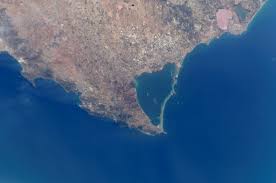
Introduction
The monsoon season is a crucial climatic phenomenon that significantly influences weather patterns, agriculture, and water resources, particularly in countries across South Asia. As the 2023 monsoon unfolds, understanding its implications becomes increasingly important for farmers, urban planners, and residents alike. This year’s monsoon is of immense relevance due to ongoing climate change, which has led to unprecedented weather occurrences globally.
Monsoon Patterns and Predictions
As of mid-June 2023, meteorological departments across various nations have reported varied monsoon patterns. The India Meteorological Department (IMD) forecasts a robust monsoon this year, with rainfall expected to be above average in several regions. This comes as a welcome relief for agriculture, which suffered due to below-average rainfall in the previous year.
However, the unpredictable nature of monsoon rains has raised concerns. Rainfall intensity, while beneficial for crops, can also lead to flash floods, landslides, and waterlogging, jeopardising both infrastructure and livelihoods. Regions such as Kerala and Mumbai, which are historically prone to floods, are gearing up for potential disasters by enhancing their drainage systems and conducting early warning drills.
Impact on Agriculture and Economy
Agriculture is heavily reliant on the monsoon rains, with approximately 60% of the population depending on this vital water source for their livelihoods. The 2023 monsoon is expected to provide a significant boost to agricultural output, particularly in rice and pulse production, which are staples in the Indian diet.
However, farmers are advised to remain vigilant. With reports suggesting possible erratic rainfall, there is concern over crop damage if floods occur. Agriculture experts are advocating for the adoption of sustainable farming practices that include rainwater harvesting and the use of drought-resistant crop varieties. Such practices would not only optimise yield but also enhance resilience against climate-induced shocks.
Conclusion: Preparing for the Monsoon
As the monsoon progresses, it is imperative for communities and governments to stay prepared. Early flood warning systems, improved infrastructure, and community awareness programs are essential to mitigate risks associated with heavy rains.
The 2023 monsoon season cannot be treated lightly, given its potential impact on food security and economic stability. Continuous monitoring of weather patterns and proactive measures will be critical for ensuring safety and maximising agricultural benefits. As such, while this season brings the promise of bountiful harvests, it also demands respect and preparedness to tackle the challenges that accompany it.
You may also like

UK Snow Forecast: What to Expect This Winter 2023

What Time Do Clocks Go Back? Understanding Daylight Saving Time
